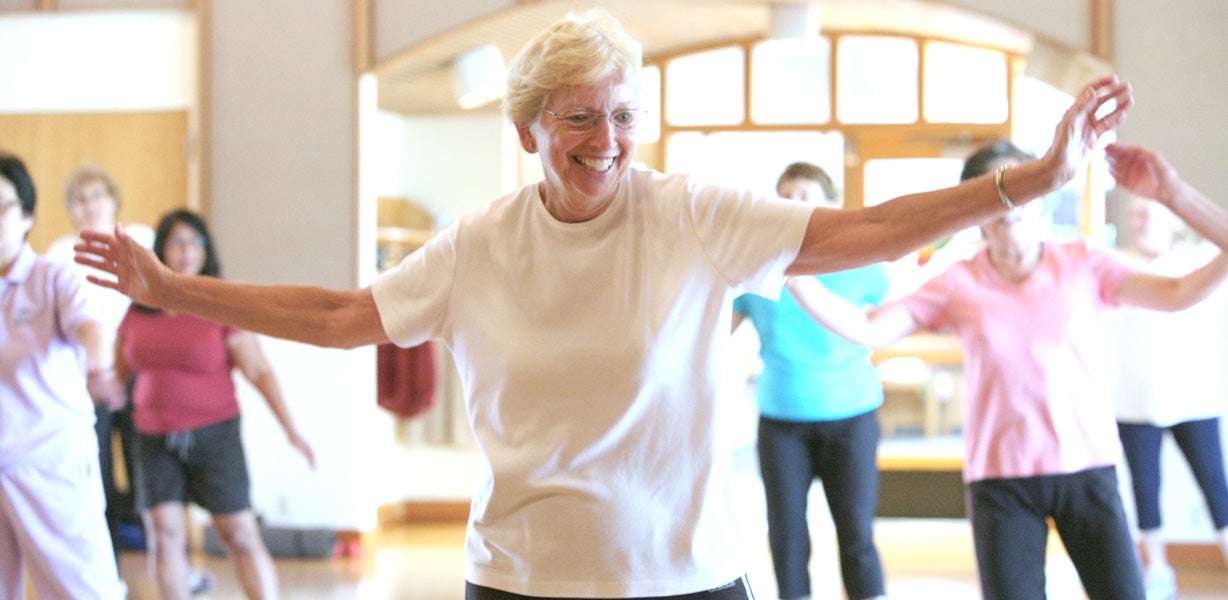IMAGE considers how to get the best out of aging
The aging process can lead to changes in the human body, but lifestyle choices can dictate the health of a person, especially when it comes to chronic disease and disabilities.
The IMAGE Group (Investigations in Metabolism, Aging, Gender and Exercise) consists of a team of Ph.D.s, medical doctors, post-doctoral fellows, nurses and research assistants who are committed to studying how appropriate interventions can lessen the impact of aging and prevent disease.
Established in 1999 by Wendy Kohrt, associate chief for research affairs, with a mission to become a national leader in aging research, the IMAGE Group is part of the CU School of Medicine on the Anschutz Medical Campus.
“We are always looking for individuals to participate in our research studies,” said Tracy Swibas, senior research assistant with the group. That’s where the general public, including faculty and staff, can help. Adults who want to contribute to science and are interested in learning about their health might be the perfect fit for an upcoming IMAGE Group study. As a bonus, participants are paid for their time.
“Even though the aging process is inevitable, the consequences of certain aging events can be lessened,” Swibas said. “We believe there are certain factors people can change (such as sleep, diet and exercise) to delay or improve the aging process.”
One recent study examined the cardiovascular risks of fat storage in hips and thighs as opposed to fat that accumulates in the stomach area. In this study, women were randomized to leg fat removal by liposuction or control (no surgery) and followed for an entire year.
“Abdominal fat gets a lot of attention with regard to increased health risks, but what is less well-appreciated is that people who store fat in their hips and thighs tend to be protected cardiovascularly,” said Rachael Van Pelt, who conducted the study and is an associate professor of geriatric medicine and a founding member of IMAGE. “We found that circulating triglycerides were increased one year following removal of the protective leg fat.”
Not all of the studies focus on women. The group currently is recruiting middle-age and older men for a research study designed to look at how aging affects fat tissue response to overeating. Men are studied for one week before and after eating high-calorie meals prepared by a research metabolic kitchen.
There are more than 20 interdisciplinary studies being conducted by the group. Numerous studies use the IMAGE exercise research lab to study how exercise affects factors such as menopause, bone health, sleep, metabolism and diseases such as cancer, diabetes, obesity and Parkinson’s disease.
“Currently we have men and women exercising three to five days a week for 16 to 24 weeks in our lab to determine how exercise impacts different disease risk,” Swibas said. “These studies are great for people on campus or someone who lives nearby looking to become active.”
While each study’s outcome and time commitment varies, participants are compensated for their time, and receive lab work, medical tests, body composition and fitness-level measurements. Some studies also provide exercise programs and / or meals free of charge. Each study requires participants to pass a screening process to meet specific enrollment criteria.
“The overall experience is positive and many research participants return to participate in other studies,” Swibas said.
Anywhere from 20 to 300 participants are recruited for each research project, depending on the type of study and the grant awarded for research.
To see which IMAGE studies are recruiting participants, and whether you might qualify, visit the group’s website.


